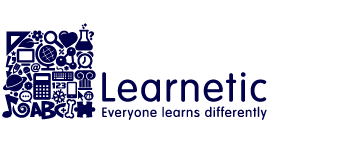“Adaptive Learning” has been a frequently used term in education for many years but today, with the advent of more ubiquitous technology in schools, education systems are placing more emphasis on the advantages of leveraging adaptive techniques within both assessments and instructional programs. Adaptive Learning, in the domain of computer-delivered instruction, is now used as a fairly generic term and can describe a wide range of functionality from the fairly simple to the highly complex. The basic idea of adaptivity in learning is the ability to modify the presentation of material in response to a student’s performance.
Building Effective Adaptive Learning Content
From the 1970s to 1980s “integrated learning systems” were developed that deployed complex and hidden algorithms to determine an individual student’s path through a given set of materials. This type of complex adaptivity today is found in research-based, specialist programs such as DreamBox (Math) or Carnegie Math where the program adapts the sequence and material presented based on analysis of specific learning style and a deep, complex and iterative analysis of a student’s understanding of a mathematical concept. Complex adaptivity is also seen in programs such as Knewton which adapts and personalizes its presentation of material based on its system’s cumulative experience of student responses and errors.
Outside of these specialist developments, the challenge today for any developers of instructional content is whether and how to add some level of adaptivity to their programs or courses, in order to better “personalize” or tailor instruction to a student’s needs. At its simplest level this adaptivity is often referred to as branching technology, where a student’s actions and responses in a task can be calibrated to determine the level and scope of the next activity. In this discussion, I would like to outline some of the issues involved in creating this simple type of adaptivity and describe a set of tools that is available to authors and publishers to create such adaptive content. I will present some descriptions and examples of adaptive resources to illustrate how they work and then introduce one new, simplified approach to building adaptive learning content.
Content Structure
Learning materials, or instructional courses designed to teach new concepts, usually have a hierarchical structure and adaptivity can be introduced at different levels of this hierarchy. Let me first start with a definition of these levels, as I will then go on to discuss adaptivity at each of the levels. The proposed levels may not match every kind of learning content exactly but in my opinion they should broadly cover most types of instructional resource, course or program.
The basic building block of the hierarchy, is usually a Learning Object traditionally represented by a single screen (sometimes with pop-ups and scrolls) usually containing text, various multimedia resources and interactive activities. Learning Objects are usually grouped into a Sequence that in practice corresponds to a user’s single learning session. You might think of a Sequence as a Lesson or a Chapter. The next level of this organization would be the “Course” which is a set of Sequences organized by a hierarchical table of contents. There may also be a higher level of organization, which corresponds to a set of Courses.
Content Or Learning Management System
In most cases, we can assume that all functions and navigation features are performed entirely within the Learning Object and Sequence. In other words, all the content features of a Learning Object and Sequence are not dependent on a Learning Management System (LMS). This also means that all adaptive learning features introduced within the Learning Object or Sequence at this level should work on any Learning Management System.
At the higher level of Course and Set of Courses, we need to assume that these structures are usually managed by the Learning Management System. This also means that the Learning Management System will be responsible for navigation between the Sequences in the same Course, as well as between different Courses and their Sequences.
The above assumptions are critical to our discussion. With a simple authoring tool, we can provide adaptive learning features at the Learning Object and Sequence level and these features will work on each and every Learning Management System, while all adaptivity involving more than one Sequence needs to relate to Learning Management System functionality because the Learning Management System is responsible for navigation between the Sequences and assigning learners to Sequences or Courses. This means that the development of adaptivity at the level of the Course and Set of Coursers is more complex and to date has been more difficult due to the lack of industry standards for interoperability.
This is why it is easier for content developers to focus on the first two levels of adaptivity: the Learning Object and the Sequence. Focusing on the Learning Object and Sequence level may, on first consideration, seem very limited but in fact this should be sufficient to enhance the quality of the learning experience for many subjects and topics.
You will find more information and examples of Adaptive eContent in PART 2





